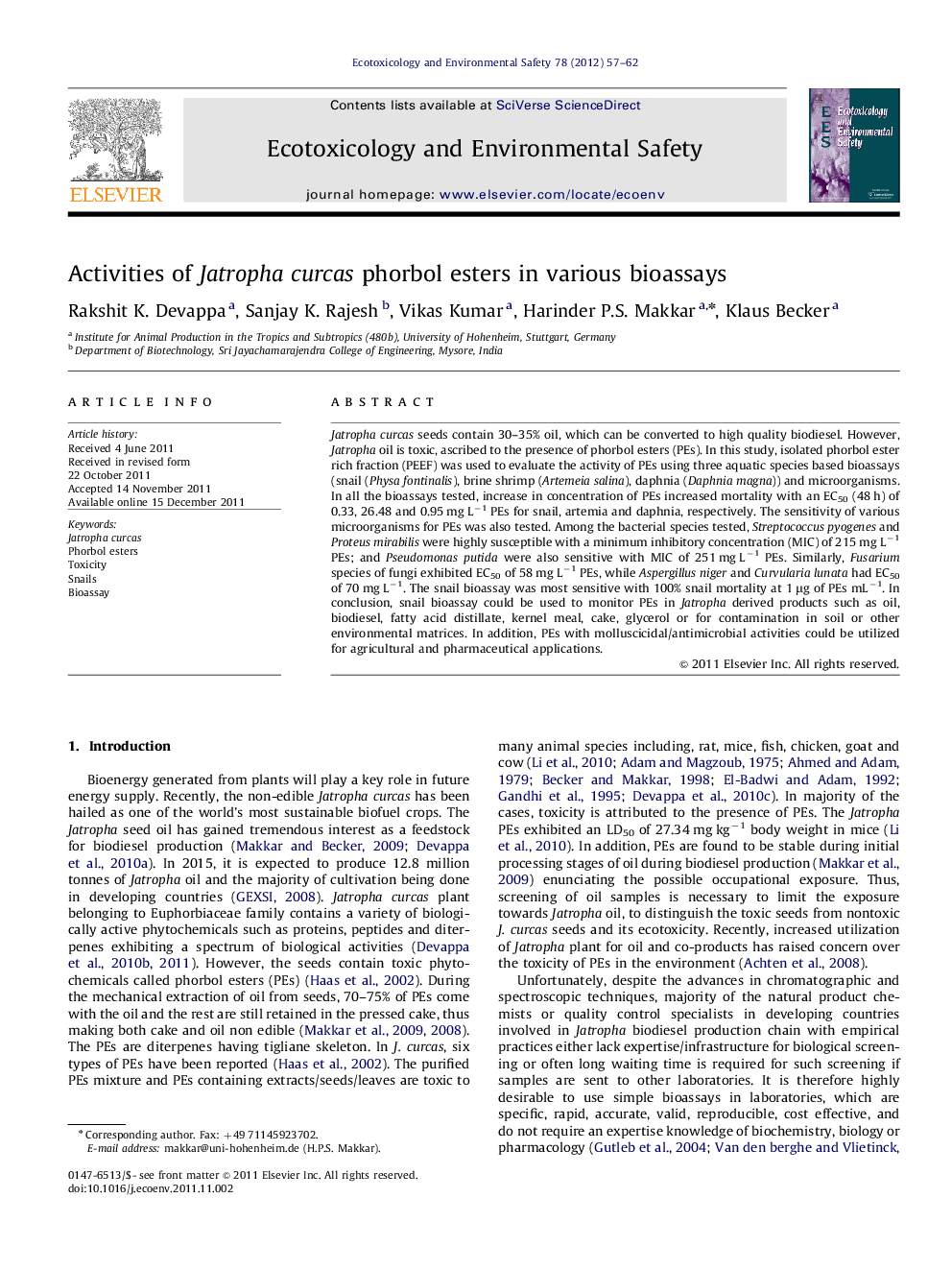| Article ID | Journal | Published Year | Pages | File Type |
|---|---|---|---|---|
| 4420890 | Ecotoxicology and Environmental Safety | 2012 | 6 Pages |
Jatropha curcas seeds contain 30–35% oil, which can be converted to high quality biodiesel. However, Jatropha oil is toxic, ascribed to the presence of phorbol esters (PEs). In this study, isolated phorbol ester rich fraction (PEEF) was used to evaluate the activity of PEs using three aquatic species based bioassays (snail (Physa fontinalis), brine shrimp (Artemeia salina), daphnia (Daphnia magna)) and microorganisms. In all the bioassays tested, increase in concentration of PEs increased mortality with an EC50 (48 h) of 0.33, 26.48 and 0.95 mg L−1 PEs for snail, artemia and daphnia, respectively. The sensitivity of various microorganisms for PEs was also tested. Among the bacterial species tested, Streptococcus pyogenes and Proteus mirabilis were highly susceptible with a minimum inhibitory concentration (MIC) of 215 mg L−1 PEs; and Pseudomonas putida were also sensitive with MIC of 251 mg L−1 PEs. Similarly, Fusarium species of fungi exhibited EC50 of 58 mg L−1 PEs, while Aspergillus niger and Curvularia lunata had EC50 of 70 mg L−1. The snail bioassay was most sensitive with 100% snail mortality at 1 μg of PEs mL−1. In conclusion, snail bioassay could be used to monitor PEs in Jatropha derived products such as oil, biodiesel, fatty acid distillate, kernel meal, cake, glycerol or for contamination in soil or other environmental matrices. In addition, PEs with molluscicidal/antimicrobial activities could be utilized for agricultural and pharmaceutical applications.
► Biodiesel feedstock Jatropha curcas seed oil contains toxic phorbol esters (PEs). ► Isolated PEs rich fraction was evaluated for toxicity using different bioassays. ► Among the bioassays tested, snail bioassay was sensitive with an EC50 of 0.33 ppm. ► Snail bioassay could be used to screen the toxic PEs in Jatropha based products.
